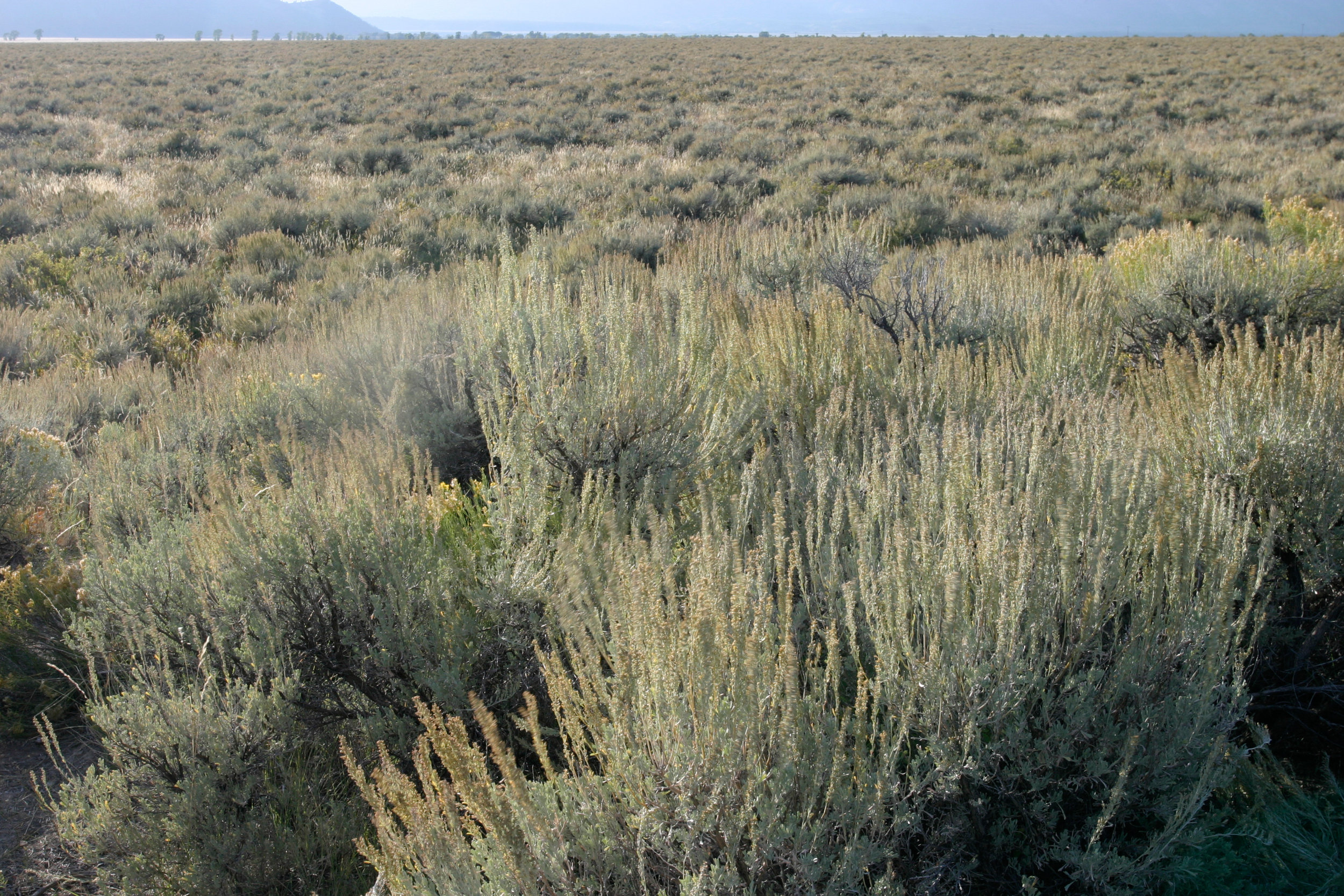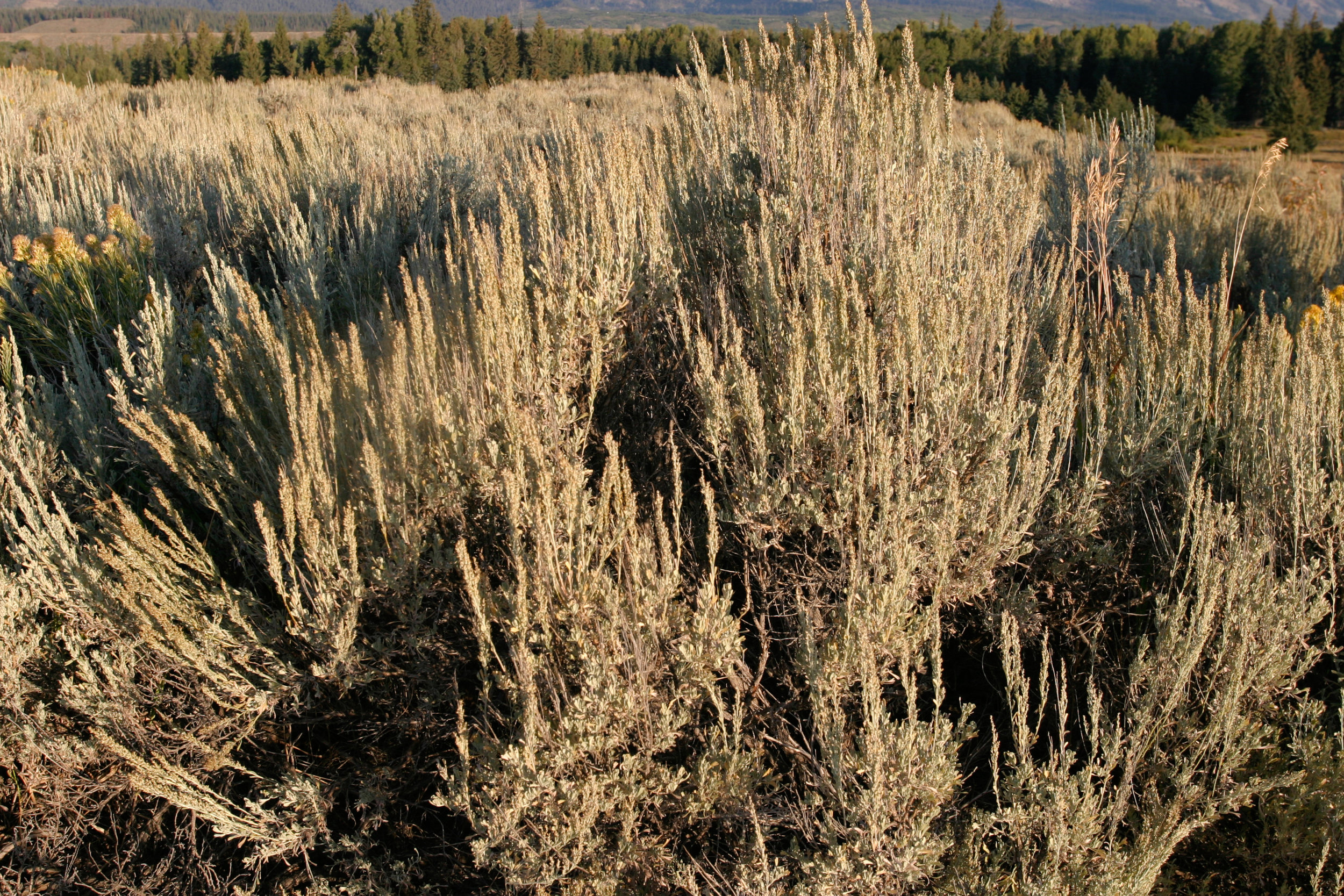Artemisia tridentata ssp. wyomingensis (Wyoming big sagebrush)
Evergreen shrub with gray-green leaves typically 2-3 ft. tall, flowering July to November. Adapted to well-drained loamy or occasionally rocky soils, from harsh dry sites of low valleys and plains, to benches and mid-elevation mountain slopes; 2,500 to 7,500 ft. elevation. Most drought tolerant of the big sagebrush subspecies. Range overlaps with the other two subspecies, occupying sites with shallower, more arid soils. Will not resprout after wildfire. Used heavily by big game species during winter months. Not as palatable as Mountain big sagebrush (ssp. vaseyana), but more palatable than Basin big sagebrush (ssp. tridentata). Crucial food source for sage-grouse. Provides valuable cover for birds and small mammals.
DISTRIBUTION / ADAPTATION
INFORMATION & ATTRIBUTES
Family: Asteraceae
Duration: Perennial
Growth Habit: Shrub/Tree
Native Status: Native
Growth Form: Multiple Stem
Mature Height: 3 ft.
Bloom Color: Yellow
Fruit/Seed Color: Brown
Bloom Period: Late Summer
Annual Precipitation: 8-20 in.
Drought Tolerance: High
Shade Tolerance: Low
Elevation: ft.
Fire Resistance: No
Fire Tolerance: Low
Nitrogen fixation: None
SOIL ADAPTATION
Coarse Texture: Yes
Medium Texture: Yes
Fine Texture: Yes
Salinity Tolerance: Low
CaCO3 Tolerance: High
pH Range: 6.0-8.5
SEEDING NOTES
Seeds per Pound: 1,700,900
Seeding Rate: PLS lbs/acre
Season: Fall
Days to Germination:
VARIETIES & LOCAL ACCESSIONS
None



